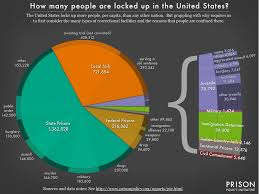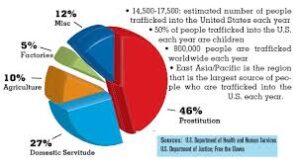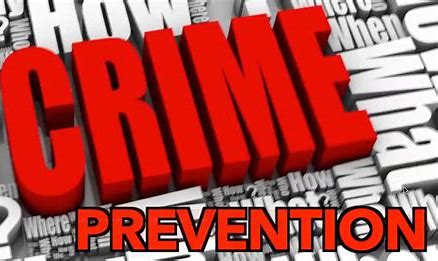Introduction

Mass incarceration in the United States refers to the significant and unprecedented growth in the number of individuals imprisoned in the country over the past few decades. The U.S. has the highest incarceration rate in the world, with about 698 per 100,000 people incarcerated as of 2020.
Several factors contribute to mass incarceration in the United States:
War on Drugs:
The “War on Drugs,” initiated in the 1970s, led to harsh sentencing laws for drug-related offenses. Mandatory minimum sentences, three-strikes laws, and other policies resulted in lengthy prison terms for non-violent drug offenders, disproportionately affecting communities of color.
Tough-on-Crime Policies:
Politicians and policymakers in the 1980s and 1990s advocated for tough-on-crime measures, including increased funding for law enforcement, longer sentences, and stricter parole and probation policies. These policies led to a significant increase in the number of people incarcerated for various offenses.
Racial Disparities
African Americans and Hispanics are disproportionately represented in the U.S. prison population. Despite similar rates of drug use across racial groups, people of color are more likely to be arrested, convicted, and receive harsher sentences compared to their white counterparts.
Privatization of Prisons:
The rise of private, for-profit prisons has created a financial incentive to keep prisons filled. Critics argue that this has led to the expansion of the prison population as well as concerns about the quality of rehabilitation and services provided within these facilities.
Poverty and Social Inequality:
Individuals from disadvantaged backgrounds, who often lack access to quality education, healthcare, and employment opportunities, are more likely to engage in criminal behavior and become involved in the criminal justice system.

Efforts to address mass incarceration include:
Sentencing Reform:
Advocates for criminal justice reform have called for changes to sentencing laws, such as reducing mandatory minimums and implementing alternatives to incarceration for non-violent offenses.
Prison Reform:
Initiatives aimed at improving conditions within prisons, providing education and rehabilitation programs, and offering reentry support for individuals leaving incarceration can help reduce recidivism rates and facilitate successful reintegration into society.
Community-Based Solutions:
Investing in community-based programs that address the root causes of crime, such as poverty, substance abuse, and mental health issues, can help prevent individuals from becoming involved in the criminal justice system in the first place.
Police Reform:
Calls for police reform focus on addressing issues of racial bias, excessive use of force, and accountability within law enforcement agencies to reduce discriminatory practices and improve community trust.
Addressing mass incarceration requires a comprehensive approach that addresses the underlying causes of crime, promotes fairness and equity within the criminal justice system, and prioritizes rehabilitation and reintegration for individuals who have been incarcerated.
Impact of Mandatory Minimum Sentences:
Mandatory minimum sentencing laws, which require judges to impose specific minimum prison terms for certain offenses, have contributed significantly to the growth of the incarcerated population. These laws often remove judicial discretion and result in lengthy sentences, particularly for non-violent drug offenses.
Three Strikes Laws:
Three strikes laws, implemented in many states in the 1990s, mandate harsh sentences for individuals convicted of a third felony offense, regardless of its severity. Critics argue that these laws disproportionately target non-violent offenders and contribute to overcrowding in prisons.

The Role of Private Prisons:
The rise of private, for-profit prisons has been a contentious issue in the debate over mass incarceration. Critics argue that the profit motive incentivizes the incarceration of more individuals and may lead to inadequate conditions and services within these facilities. Proponents argue that private prisons can save taxpayer money and provide innovative approaches to corrections.
Overcriminalization and the Expansion of Laws:
The proliferation of criminal statutes at the federal, state, and local levels has led to a phenomenon known as overcriminalization. This refers to the expansive and sometimes vague nature of criminal laws, which can result in individuals being incarcerated for minor or non-violent offenses.
Racial Disparities in Sentencing:
Despite similar rates of criminal activity across racial groups, African Americans and Hispanics are more likely to be arrested, prosecuted, convicted, and sentenced to prison compared to their white counterparts. This racial disparity in the criminal justice system is a significant driver of mass incarceration and reflects broader societal inequalities.
Effect on Voting Rights
In many states, individuals with felony convictions lose their right to vote, either temporarily or permanently. This disenfranchisement disproportionately affects communities of color and contributes to the marginalization of these populations in the political process.
International Comparison
The United States has the highest incarceration rate in the world, far exceeding rates in other developed countries. While the U.S. represents only about 4% of the global population, it incarcerates around 22% of the world’s prisoners.
Reentry Challenges
Individuals leaving prison face numerous challenges reintegrating into society, including finding employment, securing stable housing, accessing healthcare, and rebuilding relationships with family and community. These challenges increase the risk of recidivism and perpetuate the cycle of incarceration.
Intersection with Immigration Enforcement:
Mass incarceration intersects with immigration enforcement, particularly through the detention of undocumented immigrants. Immigration detention centers, many of which are operated by private companies, have faced scrutiny for their conditions and treatment of detainees.
impact on Children of Incarcerated Parents:
Millions of children in the United States have at least one parent who is incarcerated. These children are at increased risk of experiencing economic hardship, emotional distress, academic difficulties, and involvement in the criminal justice system themselves.
Addressing mass incarceration requires comprehensive reforms at multiple levels, including changes to sentencing laws, investment in alternatives to incarceration, improvements to conditions within correctional facilities, and efforts to address the root causes of crime and inequality in society.





